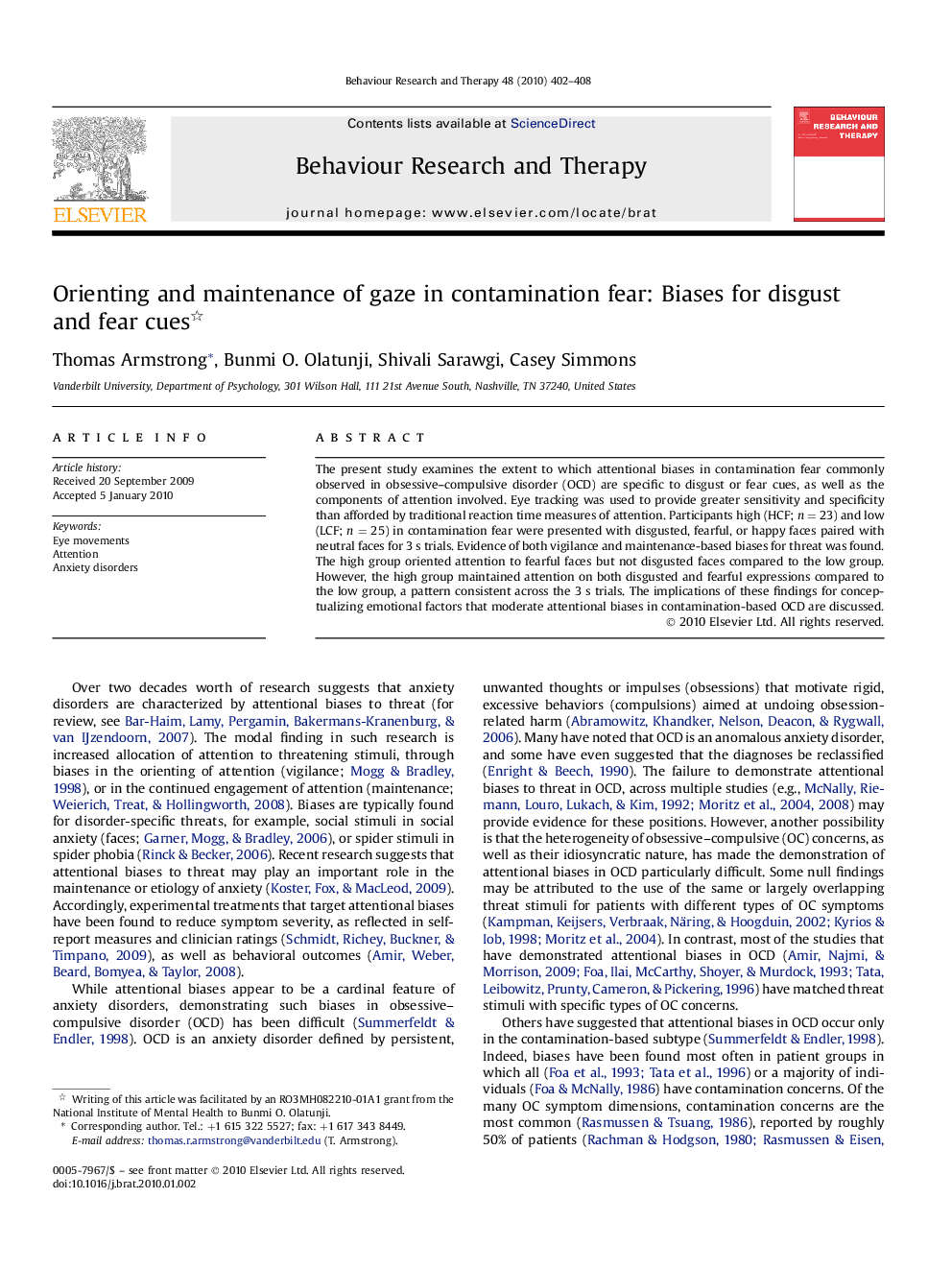| Article ID | Journal | Published Year | Pages | File Type |
|---|---|---|---|---|
| 10444673 | Behaviour Research and Therapy | 2010 | 7 Pages |
Abstract
The present study examines the extent to which attentional biases in contamination fear commonly observed in obsessive-compulsive disorder (OCD) are specific to disgust or fear cues, as well as the components of attention involved. Eye tracking was used to provide greater sensitivity and specificity than afforded by traditional reaction time measures of attention. Participants high (HCF; n = 23) and low (LCF; n = 25) in contamination fear were presented with disgusted, fearful, or happy faces paired with neutral faces for 3 s trials. Evidence of both vigilance and maintenance-based biases for threat was found. The high group oriented attention to fearful faces but not disgusted faces compared to the low group. However, the high group maintained attention on both disgusted and fearful expressions compared to the low group, a pattern consistent across the 3 s trials. The implications of these findings for conceptualizing emotional factors that moderate attentional biases in contamination-based OCD are discussed.
Related Topics
Health Sciences
Medicine and Dentistry
Psychiatry and Mental Health
Authors
Thomas Armstrong, Bunmi O. Olatunji, Shivali Sarawgi, Casey Simmons,
